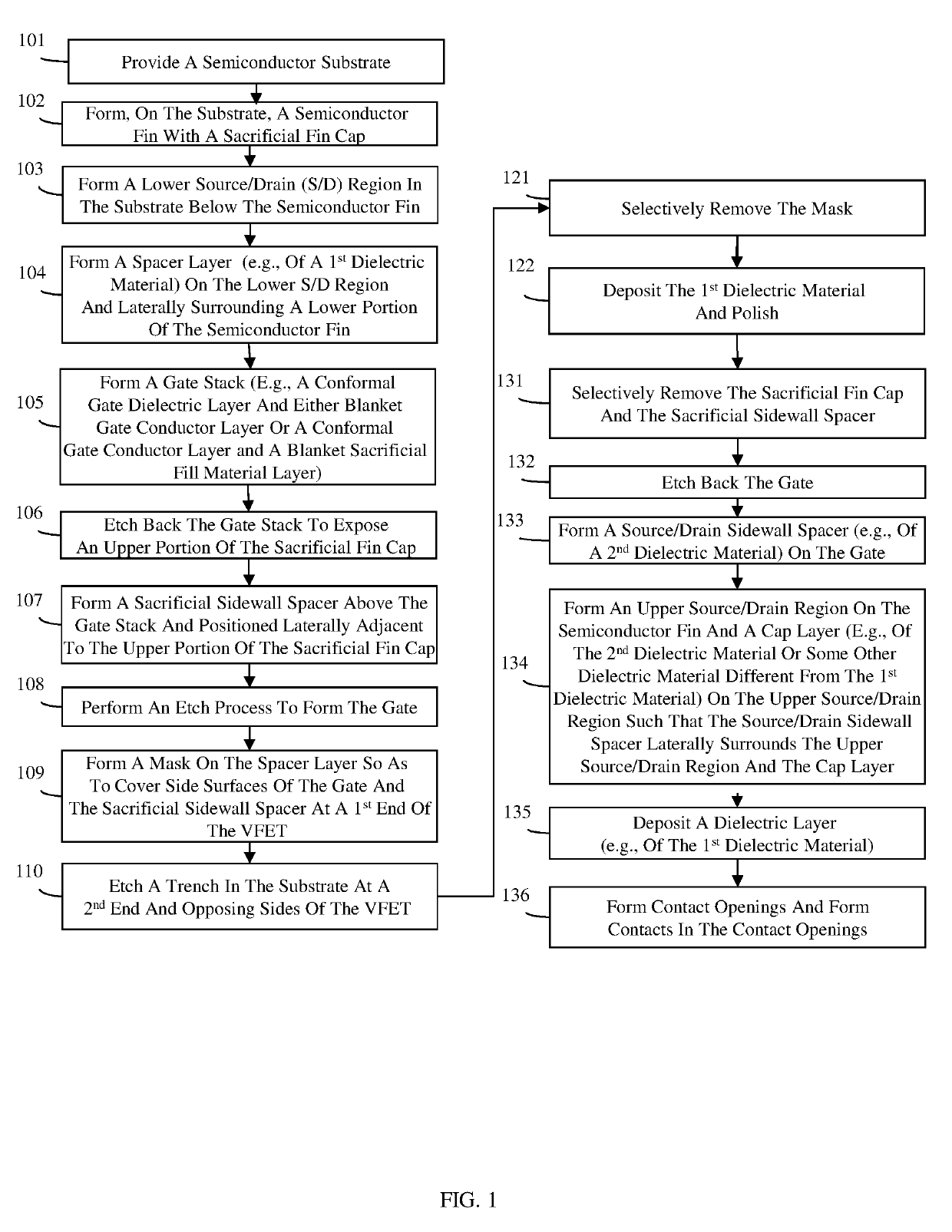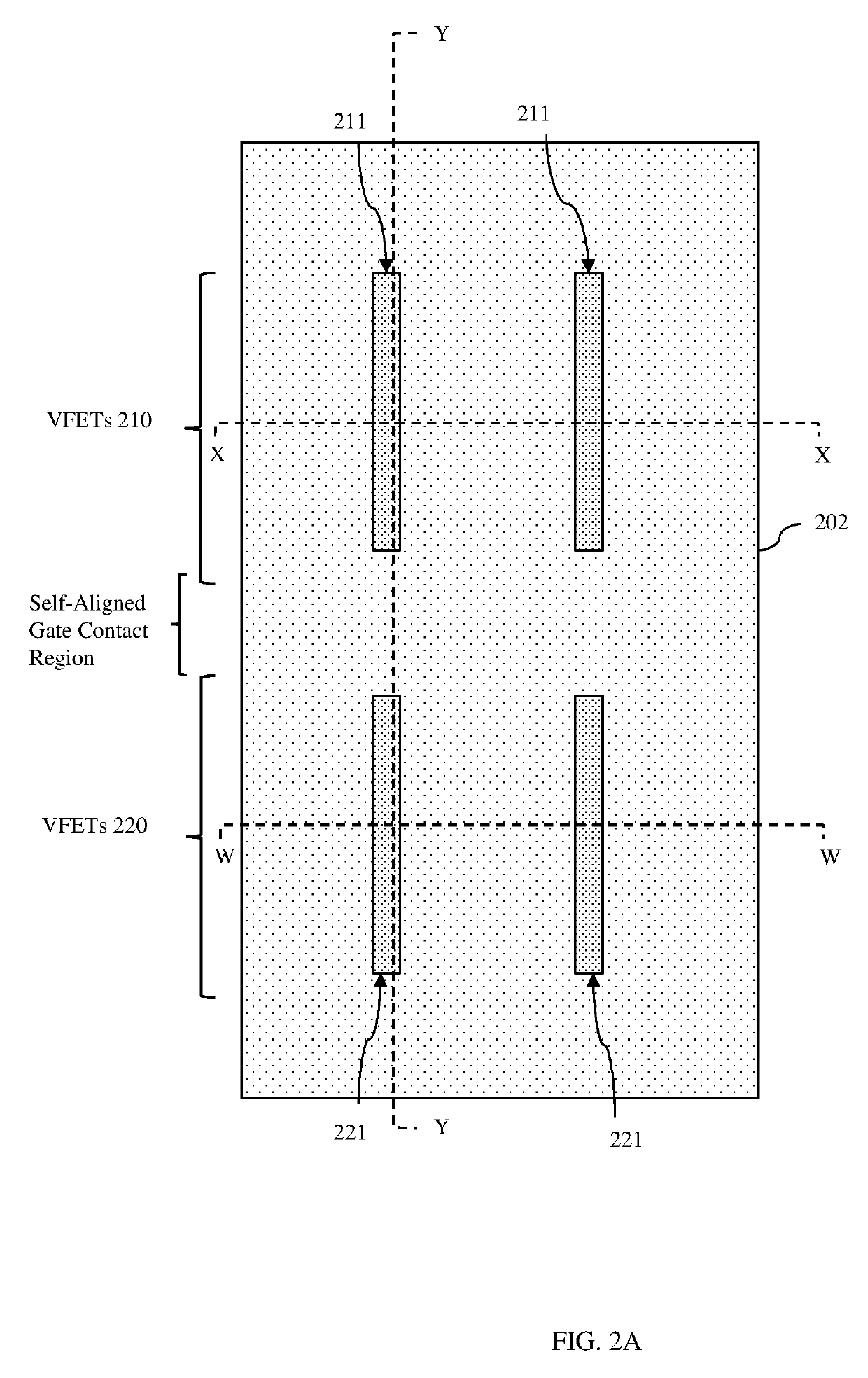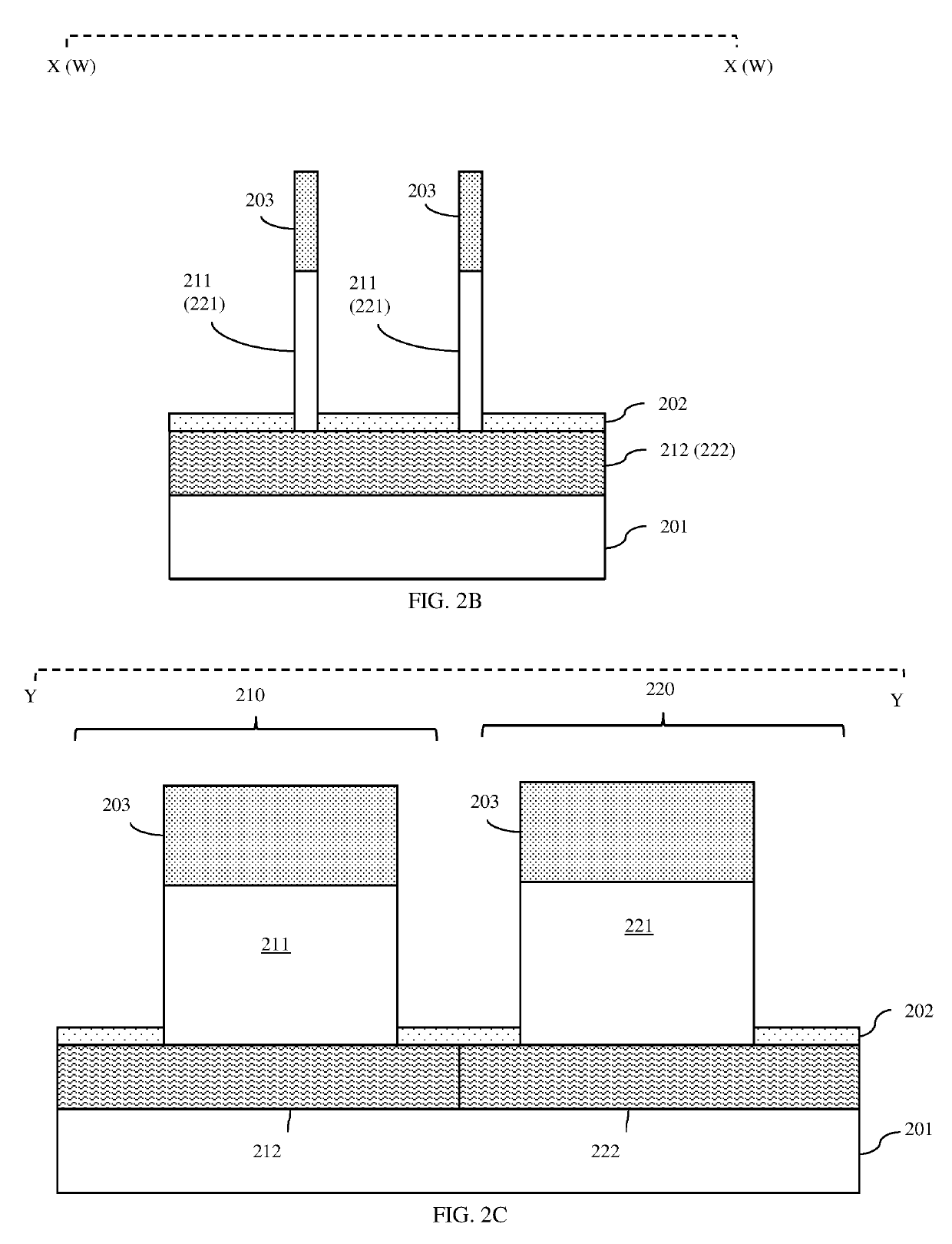Methods of forming vertical field effect transistors with self-aligned contacts and the resulting structures
a vertical field effect transistor and self-aligning technology, applied in the field of vertical field effect transistors, can solve the problems avoiding defects etc., to achieve the effect of forming gate contacts to such gates, and avoiding defects
- Summary
- Abstract
- Description
- Claims
- Application Information
AI Technical Summary
Benefits of technology
Problems solved by technology
Method used
Image
Examples
Embodiment Construction
[0037]As mentioned above, as device density (i.e., the number of devices per unit area) of integrated circuit (IC) designs continues to be increased, forming vertical field effect transistors (VFETs) without violating design rules and / or risking the formation of defects (e.g., gate contact-to-upper source / drain region shorts, lower source / drain contact-to-gate shorts, etc.) can be difficult. For example, recently IC designs have been developed with a reduced fin pitch of 36 nm or less in order to increase device density in an array of VFETs. This reduction in fin pitch necessarily requires a corresponding reduction in the gate pitch to minimize parasitic capacitance. One recently developed technique for reducing gate pitch is the formation of a self-aligned gate (i.e., a gate where the shape of the gate is define during an etch process that uses a sidewall spacer formed on the gate stack as a mask). However, forming a gate contact to such a gate is problematic and typically requires...
PUM
 Login to View More
Login to View More Abstract
Description
Claims
Application Information
 Login to View More
Login to View More - R&D
- Intellectual Property
- Life Sciences
- Materials
- Tech Scout
- Unparalleled Data Quality
- Higher Quality Content
- 60% Fewer Hallucinations
Browse by: Latest US Patents, China's latest patents, Technical Efficacy Thesaurus, Application Domain, Technology Topic, Popular Technical Reports.
© 2025 PatSnap. All rights reserved.Legal|Privacy policy|Modern Slavery Act Transparency Statement|Sitemap|About US| Contact US: help@patsnap.com



